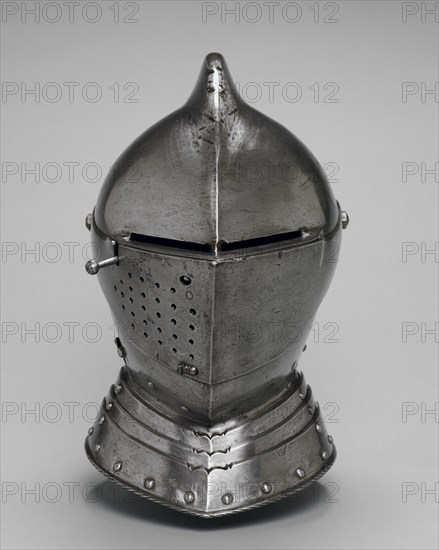
Sujet
Helmet, c. 1560 - 1580. Creator: Unknown.
Légende
Helmet, c. 1560 - 1580. This armor was developed for the joust?a sporting combat of arms between two mounted contestants. This example shows the asymmetry of jousting armor. The participants rode along a wall-like barrier known as a "tilt" with their left sides facing. Consequently, armor on that side of the body tended to be thicker. Note the larger reinforcment plate (called a grandguard) over the left shoulder for extra protection. Also, the breath holes in the helmet were placed on the right side (farthest from an opponent's lance) to avoid injuries from splinters. The bracket attached to the right breastplate is called the lance-rest, a shock-absorbing support designed to accommodate the lance when "couched" under the right armpit. The popularity of jousts and tournaments peaked around 1500 and required armor and other sporting equipment adapted for the endlessly varied games. By the reign of Emperor Maximilian I (1493-1519), there were at least 11 different forms of mounted jousts, exclusive of the numerous ceremonial combats on foot that employed such varied weapons as swords, halberds, pikes, and throwing axes. Each blow in the contest, especially favored in Germany, was carefully numbered and prescribed by rules.
Crédit
Photo12/Heritage Images/Heritage Art
Notre référence
HRM19F85_334
Model release
NA
Property release
NA
Licence
Droits gérés
Format disponible
82,2Mo (3,4Mo) / 40,6cm x 50,8cm / 4791 x 6000 (300dpi)